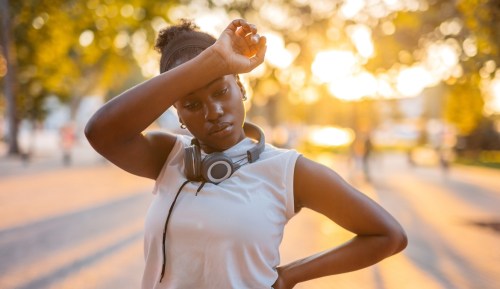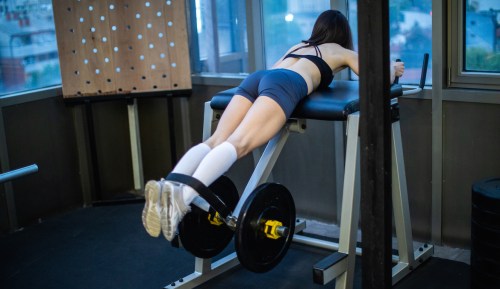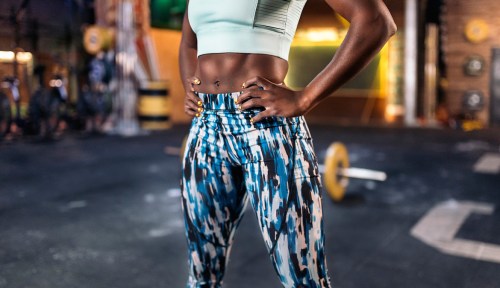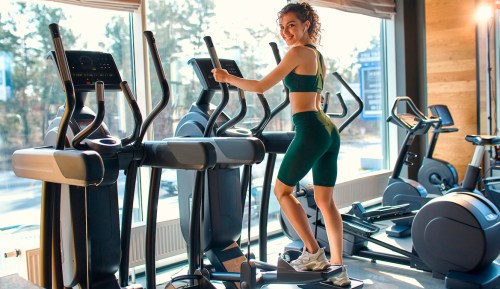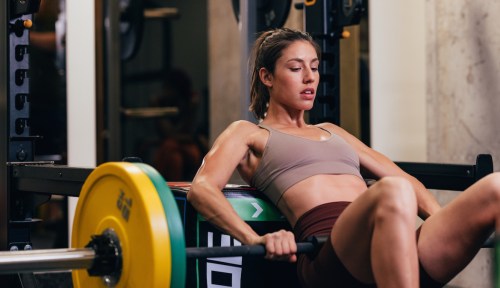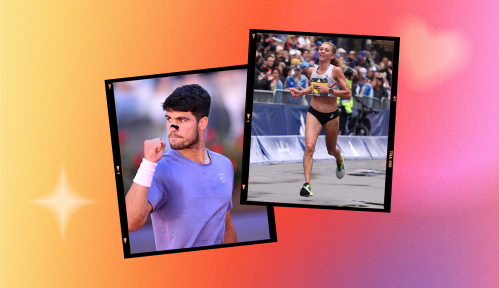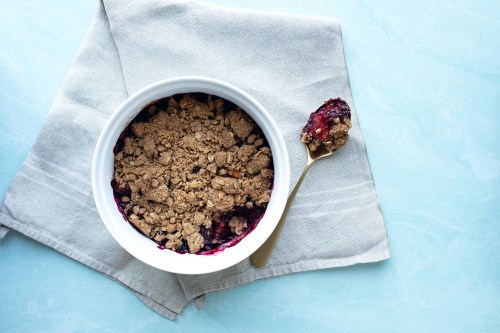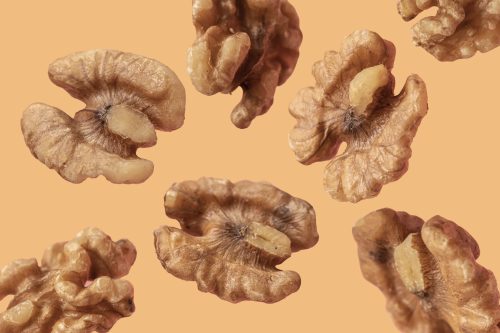Our editors independently select these products. Making a purchase through our links may earn Well+Good a commission
Plot Twist: We Might Be Spending *Too* Much Time Trying To Strengthen Our Core
Experts weigh in on the question, Is core exercise overrated? The answer: The science doesn't quite back up the emphasis we put on it.
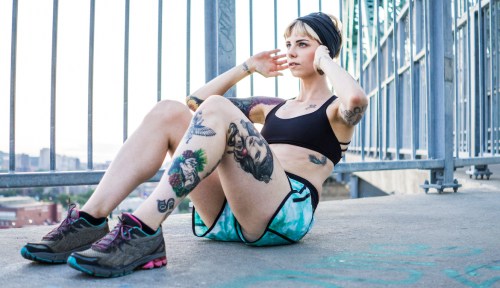
During a recent cycling class, as we transitioned to riding out of the saddle, the instructor gave what I found to be a puzzling direction: “Squeeze your core.” Out of all the other suggestions that might have been helpful in that moment (relax the shoulders, keep the pelvis over the saddle, use the glutes, flatten the feet), the instructor chose a vague and largely meaningless directive about the core. But it happens so often that we’ve just come to take it for granted—which speaks to just how mythologized and misunderstood our midsections have become.
Experts in This Article
Go to nearly any fitness class, and you’ll notice how the core—particularly the abs—is prioritized above the rest of the body, either through the time devoted to it or the way about which it is spoken. Exercises that work on the 20-plus pairs of muscles that comprise the core have even snuck their way into forms of exercise that don’t traditionally include straightforward strength-training, like yoga and cycling.
The word “core” itself has become a signifier for a certain trendy boutique fitness aesthetic: [solidcore], for instance, bills its classes on a Pilates-like reformer as a “core workout” (though other parts of the body receive plenty of attention as well); and CorePower Yoga offers more traditional yoga classes alongside options that fuse yoga with strength training and, yes, core work.
Why this fixation on the core? Claims about what core strength can do for our overall health and athletic performance abound on social media and from certified trainers and coaches alike. It can eliminate your lower-back pain! It can boost your running and cycling speed! It can improve your breathing!
All too often, a weak core is often blamed for issues that actually have different causes, says certified personal trainer Garnet Henderson. “Something I’ve heard a lot from clients is that they need more core strength,” she says. “And nine times out of 10, what they really need is more total body strength, coordination and control.” The core can become an almost-metaphorical site where other problems in the body are projected—a perpetual scapegoat, or a secret weapon, if only it could ever be strong enough.
But the truth is, research is far from conclusive about whether core training does much more than simply make your core stronger.
Where this core hype comes from
To understand why the core has become such a fixation, we need to look at the history of how we work out, says Henderson. “If you think about your classic gym from the ‘80s and ‘90s, it was full of machines, where you were mostly doing seated exercises,” she says. “The thing about machines is that the pathway of movement is really controlled, so you’re not doing any stabilizing, and it doesn’t replicate the way your muscles need to function in any kind of sport.” This, she says, resulted in a generation of gym-goers with strong limbs but neglected intrinsic stabilizing muscles, and the turn toward core work was a sort of overcorrection.
Thomas Nesser, PhD, a kinesiology professor at Indiana State University who has published studies on the relationship between core strength and athletic performance, traces the core enthusiasm to a pairof widely overblown studies from the late 1990s. He says they confused people into thinking the transversus abdominis (the deepest of our ab muscles) needs to be activated before engaging in any type of activity, when the research really only looked at specific movements.
But perhaps the most obvious explanation for why we pay so much attention to our core is an aesthetic one, stemming from the misconception that the core is synonymous with the rectus abdominis, aka the “six pack.”
Although sculpted abs are seen as a badge of honor for exercisers of all genders, Henderson points out that our hyper-focus on the core can be seen as a feminized phenomenon, stemming from “myths about what types of exercise women should and should not be doing,” she says. “A lot of women have been taught that that’s an acceptable type of strength to work on, because it’s considered aesthetically pleasing to have visible ab muscles, whereas it may not have always been considered aesthetically pleasing to have visible muscle in other areas of your body.”
“Women have been taught that that’s an acceptable type of strength to work on, because it’s considered aesthetically pleasing to have visible ab muscles.” -Garnet Henderson, CPT
In reality, whether someone has visible abs has less to do with how strong their core is and more to do with how much body fat they have in their midsection. Yet the mistaken idea that you can spot-reduce belly fat perpetuates an overemphasis on abdominal work, says Henderson. “They think that by doing a million crunches, they’re going to burn fat there, and that’s impossible—fat burning is a global, full-body process.” Not to mention that core strength and visible abs are completely separate things.
What the research has to say about the benefits of core work
The truth is, a weak core can be a limiting factor in athletic performance, Dr. Nesser says. But no more or less than any other muscle group you need for your given activity. “It does play a role, but it shouldn’t be the focus of your training,” he says. “The focus of your training should be whatever it is that you’re trying to improve. If you want to improve your back squat, then you need to do some back squats—and frankly, you’re going to improve your core strength in the process.”
One big obstacle standing in the way of measuring what the core affords us is a lack of agreed-upon clarity regarding what it consists of. For instance, manysources include the glutes, which Dr. Nesser says doesn’t make sense, since they are more associated with the lower limbs. But, it’s safe to say that the group of muscles includes at least the rectus abdominis, transversus abdominis, multifidus, obliques, erector spinae, pelvic floor, and diaphragm. In other words, the core is huge—so in that way, its importance is clear.
But, just as such a large group of muscles will serve many essential functions in the body, the size of the core and variety of muscles it includes also makes it a somewhat vague category—often too big to be useful, says Henderson. She’s stopped using the word “core” in favor of being more specific. “I try to say, ‘In this exercise, we’re trying to strengthen the muscles that stabilize your spine and pelvis,’” she says.
On the research front, Dr. Nesser similarly points out that vagueness surrounding the definition of the core makes it uniquely difficult to test; there’s no standardized assessment for core strength. That hasn’t stopped many studies from trying to study its effect on athletic performance (in football players, rowers, runners, to name some examples), with few finding convincing results.
Research on the link between core strength and lower back pain is conflicting, too. Dr. Nesser says a weak core is just one of many possible culprits for low back pain, and that getting active in general, not necessarily doing core training, is usually most important. “The core is just another cog in the system,” says Dr. Nesser. “With any broken cog, the machine is going to fail, and that can be anything from our ankles to our necks.” We may like to blame our core, but it’s really just one of many possible reasons for our pain.
What our focus on crunches has done
Eric Orton, a running coach who advocates for strengthening the “foot core” (meaning, your foot’s stabilizers), points out that abdominal exercises may make your abs stronger, but they likely won’t help you learn to engage those muscles when you need them. “Most people need to actually train to turn the muscle on,” says Orton. “They have the strength, the light is just off.” Instead, he recommends loaded, functional training, and exercises that incorporate rotation (like rotating planks), which he says will help you learn to breathe while using your core in functional, real-life settings.
Charlee Atkins, CSCS, a personal trainer and founder of Le Sweat TV, adds that widespread conflation of “abs” with “core” has compromised the development of true core strength. “Let’s stop calling abs workouts ‘core workouts,’ ” she says. “Core exercises train the core not to move,” as opposed to abs exercises, like crunches and sit-ups, which create movement at the core. If you’re looking to create stability in the body, she recommends instead focusing on exercises that train the core to become more stable, like planks, side planks, and Pallof presses.
Spending more time on the abdominals than the rest of your core can also create a muscle imbalance, adds Dr. Nesser. That could lead to issues down the road, or to tightness that could interfere with the muscles’ functionality.
Though core workouts may be overhyped, the value of strength training overall can’t be hyped enough. “So I do think it’s important to have a strong core,” says Henderson. “Because it’s important to have a strong body.”
